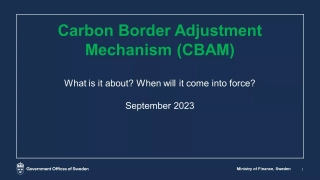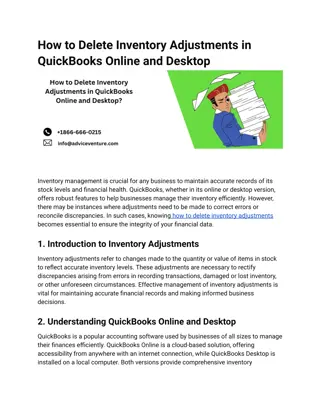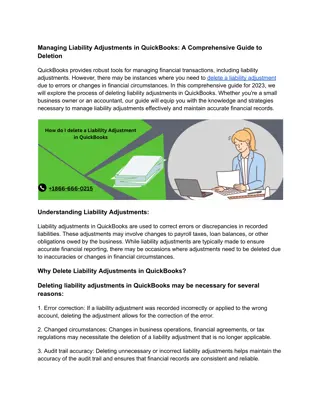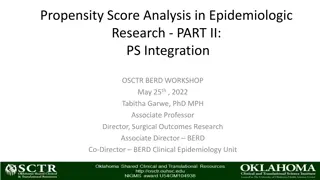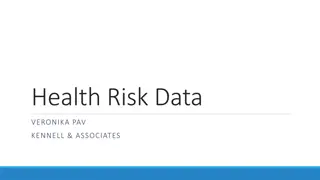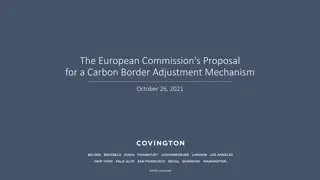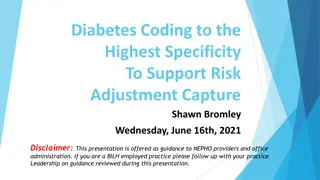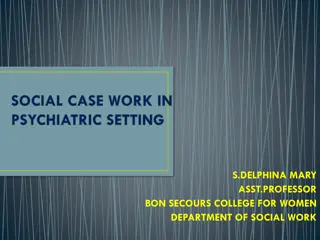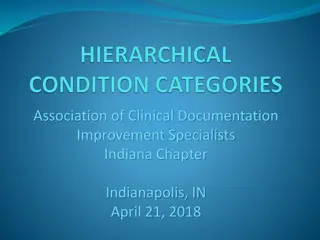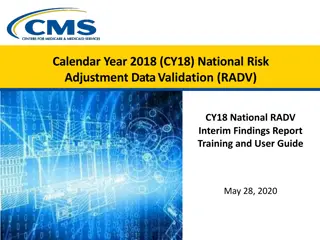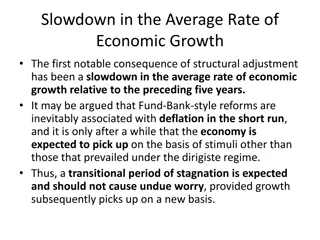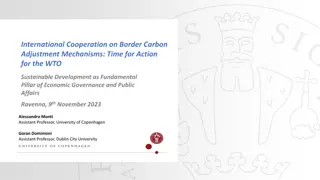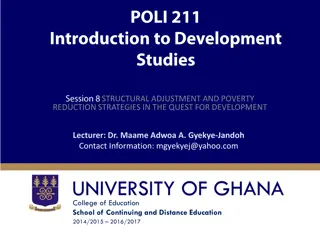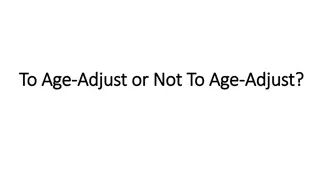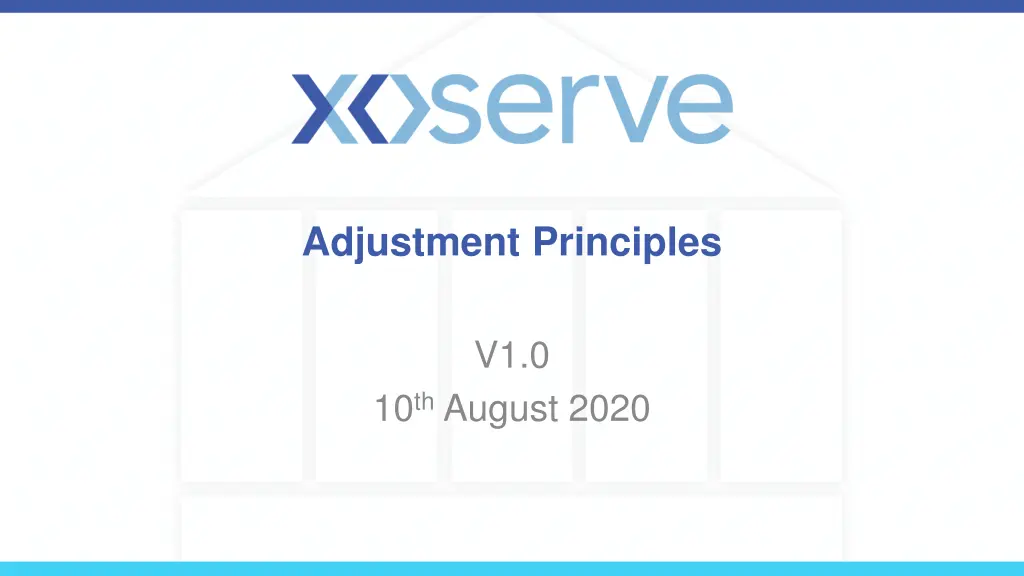
Adjustment Principles for Addressing AQ Calculation Defects
"Learn about Xoserve's adjustment principles developed to correct historical AQ calculation defects impacting LDZ capacity charges. Explore the methodology and scope of adjustments for improved accuracy."
Download Presentation

Please find below an Image/Link to download the presentation.
The content on the website is provided AS IS for your information and personal use only. It may not be sold, licensed, or shared on other websites without obtaining consent from the author. If you encounter any issues during the download, it is possible that the publisher has removed the file from their server.
You are allowed to download the files provided on this website for personal or commercial use, subject to the condition that they are used lawfully. All files are the property of their respective owners.
The content on the website is provided AS IS for your information and personal use only. It may not be sold, licensed, or shared on other websites without obtaining consent from the author.
E N D
Presentation Transcript
Adjustment Principles V1.0 10thAugust 2020
Background Since Nexus go live (June 2017) there have been c 90 defects either affecting the AQ process or the calculation of the AQ, the majority the latter. Total MPRNs impacted is c 770,000 For all defects impacting AQ calculations we have corrected the data and recalculated the AQ (where required) and the Formula Year AQ (again where required). The revised AQ/FYAQ were effective for a future date, no retrospective updates have been applied to AQ/FYAQ Where the AQ (Class 1 & 2) or FYAQ (Class 3 & 4) were incorrect this may have impacted Shippers LDZ Capacity charges as the AQ / FYAQ is used to determine the rate applied to transportation charges No impact to energy as this is corrected via Reconciliation charges AQ Taskforce has put in place measures to mitigate any future errors, however, where a defect has occurred these principles will be applied to adjust capacity charges
What Has Been Done Following a review of the capacity adjustments undertaken as a result of defect 61866, Xoserve has undertaken an assessment of historic AQ defects that has resulted in an incorrect AQ calculation. Identified potential MPRNs from all historic AQ defects where the formula year AQ (Class 3 & 4) or rolling AQ (Class 1 & 2) was incorrected for the period prior to the defect being implemented Our analysis led us to identify c.121,000 MPRNs for all historic AQ defects that could now be eligible for capacity adjustments. For each defect we sought to analyse the following; The date of the AQ calculation and if a correction of the formula year AQ was carried out; The effective period for which the correction was carried out; The date of the AQ correction and the date formula year AQ was corrected from Xoserve have developed an Adjustment Methodology document that will seek to articulate how we have arrived at these numbers in more detail, this has been shared with all customers and will be discussed further at August CoMC In support of this, Xoserve has developed a set of adjustment principles (built on UNC rules). These principles will be used to calculate an adjusted capacity value. It is intended to present these at August s CoMC for discussion/approval In support of the above Xoserve are seeking to deliver enhanced system capabilities to ensure accuracy and completeness and these are currently being discussed with our service partners to understand delivery. It is expected that these adjustments will sought to be initiated from September onwards, but this will be confirmed pending the above.
Adjustment Principles Background Where the AQ/FYAQ has been incorrect and used for the calculation of LDZ capacity charges, adjustment principles has been developed to provide the rules required to calculate and submit the adjustments These adjustments will be both credits and debits The following slides provide a summary of the adjustment principles developed
Adjustment Principles - Scope Class 3 and 4 meter points: Where a defect has caused the AQ/SOQ to be calculated incorrectly and impacted the AQ/SOQ used to determine the FYAQ/SOQ effective for the 1st April which is used for transportation charges For Class 1 & 2 meter points Where a defect has caused the AQ (rolling AQ) to be calculated incorrectly and impacted the AQ used to determine transportation charges Includes both GT and IGT sites
Out of Scope Interest on adjustments will not be applicable for these adjustments. Since Nexus interest has only been applied on Duplicate contacts raised via Contact Management System (in CMS). NTS Sites, as these sites are not impacted by AQ defects. Energy and Commodity Charges as these are corrected by the Reconciliation process.
Considerations Shipper Transfer; adjustment will be calculated for each Shippers period of ownership for the period of the adjustment. Any AQ Corrections submitted by the Shipper will be excluded for the period, from the effective date of the revised AQ (period prior to this will require adjustment). Any changes in Class; Class 3 & 4 to Class 1 & 2 or vice versa as transportation charges are based on a different value Consider any adjustments required to the Customer Fixed Charge (CFI) Identify any offline adjustment that have previously been performed for the period. Adjustments will only be for the previous 18 months as per UNC Section S1.8.3
UNC Section S1.8.3 In the absence of fraud, after the expiry of 18 months (or any other period agreed between the Transporter and the User) after the Invoice Due Date (in accordance with paragraph 3.1) in respect of any Invoice Document: (a) no adjustment may be made to an Invoice Amount under that Invoice Document, other than: (i) an adjustment of which the Transporter had given notice to the User; or (ii) an adjustment pursuant to an Invoice Query raised by a User (in accordance with paragraph 4) before the expiry of such period; Is the above your interpretation of the period of adjustment?
Method Identify MPRNs where the AQ/FYAQ was incorrect (using the Adjustment Methodology) Identify the period the AQ/ FYAQ was incorrect Identify the correct AQ/FYAQ values Recalculate the charges based on the corrected values for the period; . Obtain original AQ/SOQ/FYAQ/FYSOQ, rates and actual invoice amount Obtain the correct AQ/SOQ/FYAQ & FYSOQ values Calculate charges using the revised corrected values Calculate adjustment based on the difference between the two values
Invoicing The adjustments will result in a credit/debit charge to Shippers and Networks The invoice will be issued with supporting information providing the original incorrect value used to calculate the transportation charges and the corrected values Supporting information will be issued offline via excel format Supporting Information will show the charges at MPRN level and at variance level, the Invoice charges will be at aggregate level. Invoice and Supporting Information will be issued on the same day The charges will be issued via the .INR invoice
High Level Plan Financial Adjustments Methodology was issued on 15th July 2020 and will be discussed at August CoMC Financial Adjustment Principles issued to customers on 10th August Present Adjustment Methodology and Principles at August CoMC Complete the low level assessment and confirm the MPRNs eligible for financial adjustments : Targeted end of Aug 2020 Plan for review and approval of the outcome from the low level assessment with DN s and shippers : During Sep 2020 Submit Comms to the impacted customers along with the details of MPRNs and financial values prior to the issue of the actual invoices : Targeted Q3 2020 (FY) Issue Invoice with adjustment charges and associated supporting information : Targeted Q3 2020 (FY) Prepare a plan to assess live defects that have similar impacts to AQ calculation process :- Ongoing Progress updates will be shared in the regular CoMc sessions as well as on the AQ taskforce page on Xoserve.com

